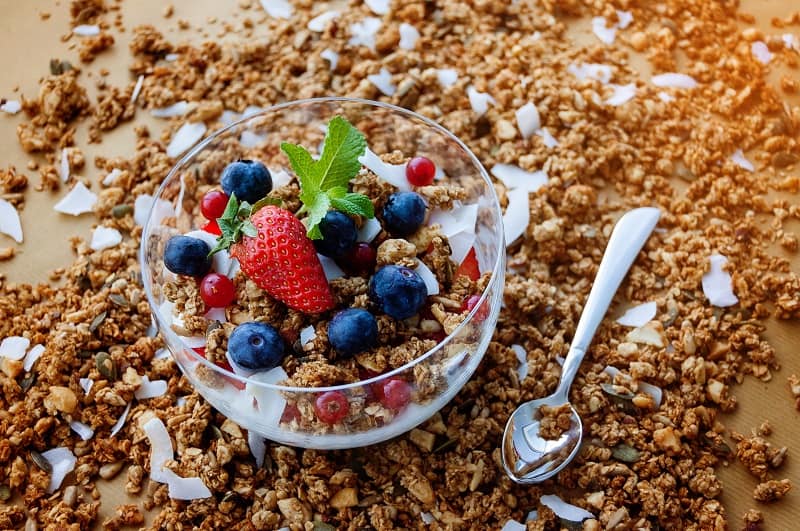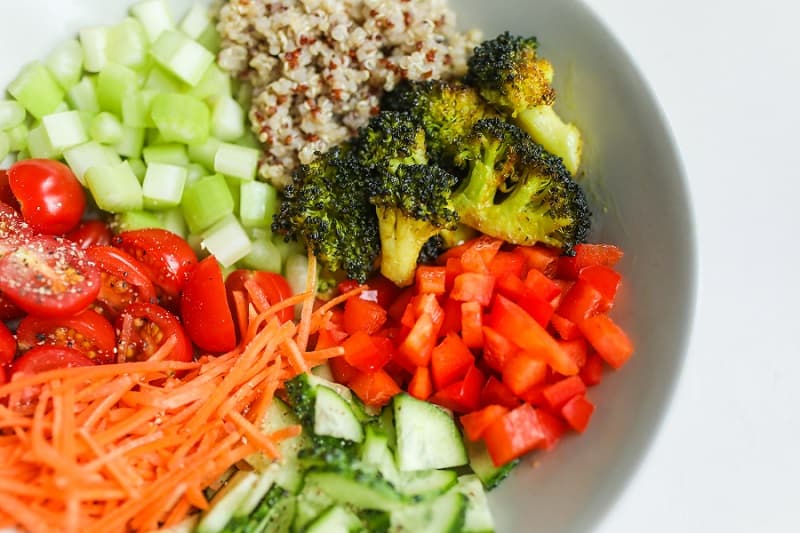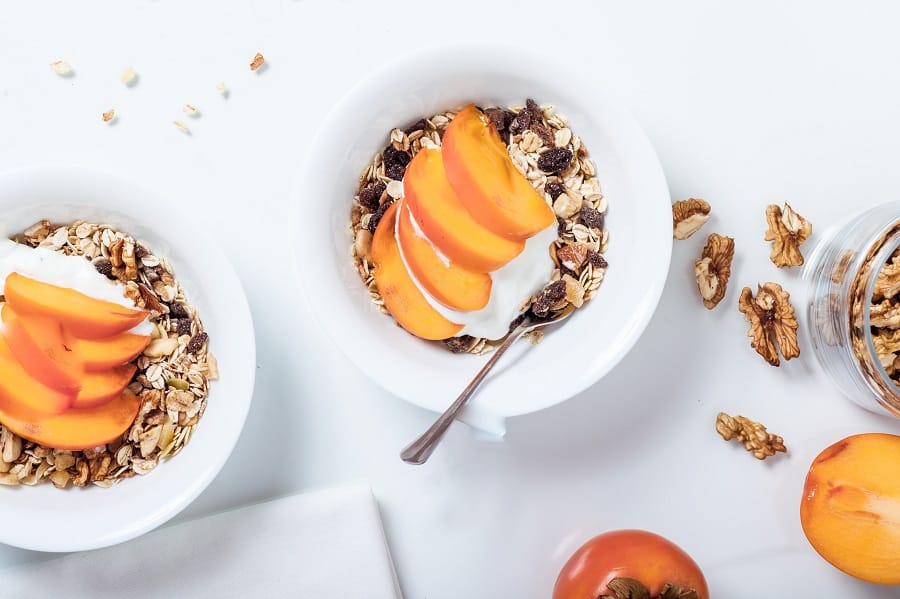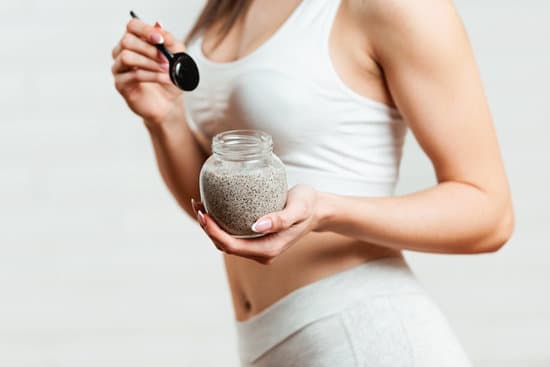For most, weight loss feels like an ongoing losing battle. After much experimentation and research, I believe I have found 14 of the easiest ways for anyone to accelerate their weight loss efforts.
Whether you have 100 pounds to lose or 10, there are simple weight loss strategies that will provide essential tweaks to your regimen to provide the results you have been striving for.
Unlike most weight-loss regimens, you don’t have to spend hours in the gym every day. You simply have to implement small, but effective healthy habits current research has tested and concluded as being beneficial to both your waistline and general health.
1. Schedule your exercise before breakfast
You want to exercise during a time where you have been fasting for at least 6 hours to achieve the max amount of weight loss benefits from your workout.
For most people, this tends to be bright and early in the morning when they first wake up.
Studies have shown that exercising after a meal blunts the effects of what could be an extended fat burning session long after your workout is complete.
When working out while fasting your body has to tap into its energy stores (glycogen and fat) to fuel your workout.
If you choose to work out after a meal (or within approximately 6 hours of a meal) your body readily obtains its energy needed for the physical engagement by scooping up the available glucose swimming around in your bloodstream.
That means the additional calorie burn is two-fold when exercising while fasting:
- You are using fat and glycogen to fuel your workout instead of glucose
- Your body has to burn additional calories to convert the stored energy into a form that is readily utilized
You may believe that exercising when you are most hungry will be uncomfortable, but this is hardly accurate.
Our bodies are designed to curb feelings of hunger when they are engaged in at least moderate physical activity.
This may be brisk walking, jogging, hiking, swimming, biking, or even dancing if you get your heart rate up high enough.
The fact is, we still possess our innate caveman bodies that focus our energy on survival when engaging in exercise. Thus, appetite is set aside for the time being.
Many people feel that they couldn’t possibly wake up earlier than they already do each day, or at least most days. But these sessions do not have to be prolonged.
30 solid minutes of calisthenics will do the trick.
2. Eat the majority of your calories early each day

Dr. Greger calls this “front-loading”. He was the inspiration for many of these evidence-based weight loss strategies.
As the research explains, your body is primed and ready to utilize incoming morning and midday calories as energy. As opposed to using calories consumed later in the day as stored energy.
Several plant-based pioneers such as Dr. Alan Goldhammer, Dr. Joel Fuhrman, Dr. Michael Klaper, and so forth express the weight loss and overall health benefits associated with “intermittent fasting”, otherwise known as a shortened “feeding window”.
It is theorized that going to bed on an empty stomach allows your body to focus on repair and maintenance instead of digestion. This is an important time for your body to detox and recharge for the upcoming day.
When the body is able to detoxify and repair itself efficiently your metabolic mechanisms work more efficiently as well.
This allows you to burn more calories during rest.
It is recommended to fast between 12 and 16 hours each night.
This strategy may seem difficult to implement due to the time restriction, but I assure you that it is worth the effort.
It doesn’t take more than a few days to a week to train your body to hold off on its hunger drive until you can provide the next meal.
Soon, it’ll feel comfortable as with any other habit you have set subconsciously on auto-pilot.
I tend to fast from 2 pm to around 8 am the following morning. This seems to work best for my schedule, and my internal clock.
Play around with the time frame that works best for you and your lifestyle.
3. Use meal sequencing
This is a great trick I learned from following Dr. Goldhamer and Dr. McDougall’s tactics.
Start your meal off with the least calorie-dense foods and work your way up to the foods with greater and greater calorie density.
Following a whole-foods plant-based diet (WFPB), your meal may consist of something similar to this example:
First: Salad with lots of raw fruits and veggies
Second: Vegetable soup with a non-creamy base and/or steamed veggies
Third: Starches (rice, potatoes, beans, squash, sweet potatoes, quinoa, oats, etc.)
If you are still hungry following this mound of heavy water-based foods, have some fruit for desert, or start over beginning with the salad.
The strategy works due to the inevitable response you will eventually achieve from your stomach’s stretch receptors. These foods are all incredibly high in water content.
Some contain as much as 90 – 98% water, such as lettuce, cucumber, tomatoes, strawberries, cantaloupe, watermelon, spinach, mushrooms, and broccoli.
Water content is not the only reason this tactic is so effective for weight loss.
Starches have been consistently rated highest for maximum satiety in studies where participants were given several different foods and asked to rate them from highest to lowest in terms of how satiated (or full) they felt afterward.
Can you guess what the results showed for the #1 most satiating food? Yep – potatoes!
Even though these are a high glycemic index food, their slow burning starch makes them perfect for weight loss. They will keep you feeling full for extended time periods.
Therefore, you will be unlikely to raid the refrigerator within just an hour or so after a meal.
4. Ingest 2 tablespoons of vinegar each day

I know this one sounds weird, but it actually works! I’ve been doing this every day for almost six months now and it has already paid off.
The acetic acid found in vinegar has been shown to provide a significant weight loss boost. Apparently, according to Dr. Greger, vinegar has been used for centuries to treat obesity.
Its mechanism of action was unknown until researchers recently began to study this phenomenon.
They found that acetic acid naturally boosts AMPK (adenosine monophosphate-activated protein kinase) inside the body when metabolized. AMPK is the determining factor when it comes to transitioning stored fat into burned fat.
It basically mimics endurance exercise!
Acetic acid also helps reduce excess weight by reducing the effect of high glycemic foods in the bloodstream. So dipping your bread in vinegar could be lowering the subsequent sugar spike by up to 23%.
Apparently, the acid improves both blood sugar and insulin response, ultimately providing a three-fold benefit for weight loss purposes.
Just 2 tablespoons a day has been shown to equate to a number of inches off your waist and a significant amount of pounds dropped within just months of starting this regimen.
Altough two tablespoons is exactly how much I dress my daily salad with, the AMPK, and insulin effects work better when you spread this dose out throughout the day.
Taking 2 teaspoons three times per day is better recommended due to the fast rate at which acetic acid is metabolized by the body.
Vinegar can also be used to flavor fruit when heating on the stove top, or for spritzing onto vegetables or popcorn. It can also be used when baking bread and other baked goods.
I enjoy it best when stir-frying veggies and when used in salad dressings. Also, feel free to use flavored vinegars, as these also contain acetic acid.
If you prefer a quicker method, mix your two teaspoons of vinegar with a half glass of water three times per day and you get the same benefit.
Just be sure to take these acetic acid shots with meals to get the blood sugar blunting effects.
5. Enjoy a large salad every day
I have to thank Dr. Fuhrman, Dr. Goldhamer, and Dr. Klaper for this gift that keeps on giving. There is nothing more refreshing and nutritious than a colorful, delicious salad.
As soon as it becomes a regular habit, you cannot possibly imagine your day without it.
It is a relief not having to think about what I’m going to make myself for lunch everyday. My salad is always at the forefront of my mind when noon rolls around.
Vegetables and fruit have the lowest caloric density of any food. So naturally, they are incredibly conducive to weight loss.
Calorie density is simply the number of calories per volume of food. Vegetables provide the most nutrients per calorie of any food on the planet, while simultaneously containing the least calories of any food.
You are doing yourself a major disservice by not taking advantage of this fun-fact!
Salads not only provide a variety of nutrients and support weight loss, but they also trigger your stretch receptors thoroughly due to their high water content.
A salad can act as a vehicle for including many other nutritious foods, such as nuts and seeds, vinegar, fresh fruit, sauteed veggies, and whole grains.
You could make a different salad everyday of your life and still have plenty of novel options to choose from.
Be sure to switch up your ingredients regularly to get a pletheura of nutrients with every salad.
Chopping up salad vegetables each and every day can be very tedious and time consuming. I highly recommend purchasing a large Tupperware container to preserve a large salad.
This way, you will only prepare your salad once or twice per week, instead of a single salad each day.
Try to switch out your greens and toppings to be sure you are getting variety. For example, I might use red cabbage and kale one week, then Romaine lettuce and bok choy or mixed greens the next week.
Try to choose a fruit or veggie that satisfies every color of the rainbow. This will ensure adequate nutrient diversity.
6. Get at least 7-9 hours of sleep regularly

Sleep has a significant impact on your appetite, as well as your satiety mechanisms.
You will inevitably take in more calories more frequently throughout your day when you are sleep derived.
What’s worse is that research shows your willpower and self-discipline also decline when you have not received sufficient sleep.
These are finite characteristics that gradually deplete as we go about our day. That is why it is so much easier to over-eat dinner or binge on late-night snacks than it is to over-eat earlier in the day.
Your capacity for selecting quality foods also becomes diminished with less sleep.
You are much more likely to reach for that bagel or a doughnut in the mornings when you have only had five hours of sleep, for instance, than when you have had 7-9 hours of solid sleep.
Our judgment is significantly impaired when we are lacking in sleep. Your ability to weigh the pros and cons of a given situation is greatly compromised.
The decision making process is taxing on the mind.
So all the usual reasons that you are able to refrain from eating high-calorie junk food when you have had adequate sleep will not appeal to your sleep-deprived self.
We simply do not have the energy or the mental restrain to maintain our distance from high-fatty, salty, or sugary foods when our minds are cloudy.
You will also likely be unable to muster the energy to cook and prepare yourself nourishing healthy meals when you have not received the minimum of 7 hours of sleep the previous night.
Convenience foods become overly appealing when you start dreading the effort it takes to put together a wholesome meal.
There are many helpful sleep tips available online at through your primary care physician. I am particularly fond of Mathew Walker’s research on sleep.
He is a neuroscience professor at Berkley University in California. Here is a short video of his giving some of his famous sleep pointers:
7. Eat more raw foods
When we cook our food we actually increase their bioavailability, and thus the calorie content of those foods.
They become more readily digested and absorbed by the intestinal tract. What we eat doesn’t necessarily determine how many calories our bodies utilize each day, it’s the calories we absorb that matter.
One cup of raw carrots, for example, provides 52 calories. While one cup of cooked carrots offers 82 calories. That’s a 30 calorie increase per serving simply from cooking the same item.
The fiber is kept undamaged and completely intact when plant foods are eaten raw. This means that your body has to work harder to break away the nutrient molecules that are attached to the sturdy fibers.
You actually burn more calories digesting raw foods than you do with cooked alternatives. Your body must expend more energy to digest the same nutrients this way.
You also take in more water when consuming raw plant foods vs cooked. This leads to more mass in your stomach, which equates to a stronger, quicker stretch-receptor signal.
Basically, you feel more full and at a faster rate with the raw food versions.
Raw foods also require more mechanical energy to digest. In other words, you have to chew the material much more thoroughly.
Conversely, cooked foods take much less effort to chew and slide down the back of your throat to be swallowed.
Which leads to my next point, more chewing means slower rate of food intake. This gives your digestive system more time to register the calories and amount of food that has been taken in.
Ultimately, you end up feeling fuller faster than you would with cooked alternatives.
When utilizing this information on a regular basis you are able to take in significantly fewer calories throughout your day. Eventually, reaching for the raw fruits, nuts, seeds, and veggies becomes second nature.
You ultimately begin to prefer such foods raw. I can actually taste the sweetness in raw carrots and slight saltiness of raw broccoli.
Since veggies are the least calorically dense of all foods, they make for delicious and easy weight loss snacks.
Some plant foods are more nutritious and healthy when cooked, however, such as legumes, and mushrooms. But you have plenty of raw options to choose from in the remaining plant-based categories.
The best example of a raw plant-based dish is a salad with a variety of colorful fruits and veggies. This ties into the number five tip listed above to make it a priority to make one of your meals a large salad each and every day.
8. Strength train at least twice per week

Muscles are efficient calorie-burning machines. So naturally, the more muscle you have, the more calories you will ultimately burn.
And this doesn’t necessarily require extra effort. Your resting metabolic rate utilizes more calories when you have more muscles on your frame.
As opposed to fat tissue, for instance.
I recommend two solid strength training days per week, potentially three if you are unable to hit all the major muscle groups in two sessions.
The major areas you should target are the quadriceps, hamstrings, glutes, back (upper and lower), abs, pectorals (chest), biceps, triceps, and shoulders.
I separate upper and lower body weight training sessions to ensure an adequate amount of recovery time in between each workout.
If you do not include this time for your muscles to recover and rebuild you are not getting the max amount of benefit from your efforts.
Try doing one to two exercises per small muscle groups, e.g. biceps, triceps, shoulders. And two to three exercises for each large muscle group, e.g. quads, hamstrings, back, and chest.
Vary your sets and repetitions depending on your ability, which muscle you are working, and how heavy your weights are.
For higher reps you generally want to use lighter weights, and heavier weights with exercise in which you do fewer repetitions.
Allow 10 to 15 minutes at the end of each session for stretching. You might also like to invest in a recovery foam roller. These speed up recovery time significantly when used properly.
Eating a diet high in anti-inflammatory foods, as in whole plant foods, will also speed up your recovery.
Turmeric is especially effective for reducing the inflammation that follows a hard exercise session. Half a teaspoon per day will suffice.
9. Drink water when you feel “hunger” signals
So often I find myself contemplating what I might start preparing for my next meal when I remind myself to take in a significant amount of water first.
More times than not my presumed hunger disappears.
Thirst and dehydration can often be mistook for signs of hunger.
Make it a personal goal to turn “hunger” signals into “drink a glass of water” signals.
Carry around a water bottle to meetings, in transit, and at your desk. Just keeping the bottle visible will inevitably provoke you to drink water more regularly.
Keeping water nearby at all times also removes the effort involved. There is no need to physically get up from whatever you are doing throughout your busy day to fetch a cold glass of water.
Water should be your major, if not your only, source of fluid.
Liquids that contain calories will not be your ally when it comes to weight loss. People who drink their calories are consistently more over weight than those who drink strictly water.
If you currently get the majority of your fluids through energy drinks, soda, protein shakes, caffeinated beverages, or the like, it will take about 30 days to re-calibrate your taste buds to prefer plain, refreshing water.
Providing your body with adequate water intake will also assist in balancing your appetite and satiety mechanisms.
So be sure to drink the recommended eight cups per day at minimum to get the max amount of healthful benefits and weight loss support from this simple habit.
Plain water may seem boring or unappealing to your taste buds initially.
But just as your taste preferences will adapt to healthy food options, your preference for your beverage will also change to accommodate a cleaner more pure way of eating.
To help make the transition more smooth you can adjust gradually by adding slices of fruit like lime or lemon to your water. Some people enjoy other things such as ginger, cucumber, or turmeric in their drink.
As long as you are drinking unflavored (by commercial additives), unsweetened, pure H2O you will reap all the health and weight loss benefits associated with staying hydrated.
10. Incorporate these 4 spices into your meals

In Dr. Greger’s “How Not to Diet”, he reviews the current weight loss literature that describes these four spices as being particularly useful in weight loss regimens.
Cumin
Cumin is often used for seasoning in foods like chili and Mexican dishes.
In weight loss studies, it has been shown to suppress appetite and stimulate weight loss to the same extent as orlistat- a popular obesity medication.
Cumin has also been shown to reduce triglycerides, cholesterol, and improve blood sugar levels.
Just a half teaspoon twice per day, once during lunch and the other during dinner resulted in a significant amount of weight loss in one randomized, double-blind, placebo-controlled.
This study design is considered the gold-standard in scientific research due to the degree of certainty researchers are able to achieve with its highly-controlled format.
Female study subjects also lost an inch off their waist after the 3 month weight loss trial.
Ginger
Historically, ginger has been used to heal a number of physical and mental ailments. Weight management is one of its many prescriptions.
Ginger has shown to reduce appetite, cholesterol, triglycerides, blood sugars, and inflammatory markers in study subjects.
It has also been documented as a successful mediator for things like speeding up participants’ metabolic rates, and decreasing visceral body fat.
This last finding is of particular importance for those suffering from obesity or excess weight because visceral fat is the most harmful of all body fat.
It places itself around your abdomen suffocating your vital organs, causing them to malfunction.
Randomized placebo controlled trials show that just a half teaspoon of ginger will lead to a 10% average increase in fat burning within 2 short hours.
This effect only occured with dried ginger, however. Subjects were also unable to acheive the same amount of fat burning when the ginger was administered in the afternoon as opposed to the morning.
So, be sure to get your ginger early and purchase the dried ground variety instead of fresh.
Cayenne pepper
Hot peppers like chili and cayenne peppers activate our brown adipose tissue (BAT), which is most prominent during infancy. As we age, our brown fat dissipates and matures into the body fat that is less conducive to weight loss.
BAT burns both fat and sugar to heat our bodies. It can be activated by both dietary and temperature triggers.
The degree of BAT that remains proceeding infancy is largely determined by our genetics. Some individuals seem to preserve more than others.
Cayenne pepper, specifically has been shown to successfully activate BAT in human subjects. It consistently burns more grams of body fat in participants assigned to cayenne pepper capsules than those randomized to take the placebo.
One such study revealed that by using just a 1/2 teaspoon with meals burned an average of 10 additional calories during normal digestion. This 10 calories may not seem significant, but it certainly adds up over time.
Other studies show that when used in conjunction with calorie restriction the pepper counteracts the natural slow in metabolism experienced when attempting to take in less calories.
Garlic Powder
Several studies have investigated the weight loss benefits shown to result from using garlic powder.
One randomized, double-blind, placebo-controlled trial found that just a half teaspoon per day decreased both weight and waistline circumference significantly in the average study participant within 6 weeks.
Another study showed similar results with an average of 6 pounds of straight body fat lost over a 15 week period using a measly quarter of a teaspoon per day.
Garlic and other members of the onion family have been documented as performing specific and highly valuable detox functions within the body. This may also have a direct effect on its fat burning mechanisms.
Just as with ginger, garlic seemed to be most conducive for weight loss benefits when ingested in its dried, powder version as opposed to fresh garlic.
11. Eat Simply

There are few societies in the world that have been left unscathed by the Westernization of available dietary options and preferences. Finding simple single-ingredient foods is a luxury of the past.
Eating simply is an approach you can use to think about your meals and snacks in their most fundamental ways. I know that sounds completely vague, but you will understand after you implement this strategy regularly.
Start by reducing your convenience items. Each item in your kitchen should contain as few ingredients as possible.
Strive to make the majority of your foods single-item options, such as rice, potatoes, broccoli, beans, lentils, spinach, cashews, pumpkin seeds, etc.
These ingredients should also be in their most natural form. So instead of flaked quinoa or buckwheat cereal, swap these out for whole quinoa and whole unprocessed buckwheat varieties.
Eating foods more simply entails creating more homemade dishes and condiments.
Here is a list of examples of some foods and condiments you can easily make at home:
- hummus
- nut milk
- nut/seed butter
- salsa
- granola
- dips
- salad dressing
- baked goods
- dried fruit
- nut mixes
- “nice cream”
- smoothies
- juices
- guacamole
- fruit & vegetable salads
- pre-cut fruits & veggies (as opposed to canned varieties with added salt, sugar, and other preservatives/additives)
- beans (soaked and prepped)
By creating your own condiments and convenience items you will inevitably reduce your intake of salt, sugar, saturated & trans fat, food dyes, and other additives.
These additives will single-handedly destroy any weight loss attempts. They each are very efficient at hijacking our palate and associated neurological mechanisms signaling them to store fat and eat more calorie-rich foods.
Eating simply entails the purposeful combining of whole natural foods to create balanced, palatable, and nutrient-dense dishes, (as opposed to calorie-dense and nutrient-depleted dishes you are likely accustomed to in the Westernized world).
So you will be combining whole plant foods such as edamame, rice, vegetable varieties, and nuts to make delicious stir fry, chili, soup, salad, stroganoff, casseroles, dips, wraps, dressings, etc.
This may not sound appealing if you still have one foot in the Standard American Diet (SAD) world, or if you have yet to begin your transition.
But again, our taste buds adapt to whatever we eat. So put salty, fatty, greasy, sugary foods down your throat every day and that is what your body will learn to prefer.
Or you can put whole grains, vegetables, fruit, nuts, seeds, and legumes on your plate and re-calibrate your taste preferences accordingly.
Eventually, plain brown rice with broccoli will become far more appealing than cheese burgers and fries.
For delicious plant-based weight loss recipes, meal ideas, printable plant-based grocery lists, and more in-depth information on starting a WFPB diet try these links to be taken to my earlier articles:
- 10 Healthy Vegan Weight Loss Snacks: Full Recipes Included
- Printable Plant-based SOS & Gluten-free Grocery List & Tips!
- Top Plant-based Foods & Strategies for Fast, Sustainable Weight Loss
- 14 Reasons You are NOT Losing Weight on a Plant-based, Vegan Diet
- Top Plant-based Pantry Essentials: Benefits & Meal Ideas
- Complete Guide for Starting a Plant Based, Vegan Diet
12. Don’t go hungry
People often use calorie restriction as their sole means of losing weight. This strategy, however, will leave you frustrated and discouraged due to its unsustainable nature.
You may be able to eat 800 calories under your bodies natural hunger drive for a few months or so. But you will be utterly miserable, and you will inevitably fail at maintaining a lean weight.
Our bodies are finely tuned machines. They can calculate exactly how much food we should be taking in down to a single calorie.
When you are eating natural, whole plant foods these mechanisms are in complete functional order. You eat neither too little, nor too much and your weight remains perfectly stable and lean, (give or take a few pounds due to natural fluctuations over time).
When you choose to eat artificially stimulating foods such as pizza, ice cream, cheese, hot dogs, cookies, candy, and sweetened beverages, your body’s internal calorie counter begins to malfunction leading to a chronic overabundance of calories.
These foods trick your satiety and hunger mechanisms into feeling hungry even though you have likely eaten more than enough food at any given point.
This leads to chronic feelings of hunger which ultimately creates patterns of compulsive overeating.
On a whole plant food diet, your hunger mechanisms will send you accurate signals as to when you have obtained enough calories or when you need more because your system has evolved to recognize these wholesome, nutrient-dense foods.
Basically, restricting calories on a whole plant food SOS-free (salt, sugar, & oil) diet is unnecessary. Your internally metabolic machinery will naturally reestablish its equilibrium when the accurate nourishment is provided.
You need not go hungry when ingesting foods that are adequate for your biological requirements. In fact, it may be detrimental to do so.
When you reach the point of being famished you will likely resort to the most convenient calorie-rich food in your environment.
You will also likely overeat when in this state because you will eat fast to rid yourself of the discomfort that comes with great hunger.
There is a solution to this problem, however.
Eat enough moderately caloric-rich foods to avoid becoming too hungry. This includes starches like legumes, potatoes, squash, and whole grains.
13. Consume natural SOS-free foods

Salt, sugar, and oil are your worst enemies when it comes to restoring your body’s natural metabolic signals to regain a lean healthy body.
These additives have become ubiquitous throughout our modern food supply. It is incredibly unlikely to find packaged foods in your local market that don’t contain one, if not all three of these chemicals.
Salt, sugar, and oil are extremely detrimental to a healthy diet that supports a lean body weight.
Each one undermines our ability to take in an appropriate amount of calories each time we eat. They leave us, not only still hungry regardless of how much we have consumed, but also craving more.
The craving is an important part of their dietary detriment. The phenomenon is similar to the cravings experienced by alcoholics and other individuals addicted to drugs.
A craving is simply your brain’s anticipation of obtaining a concentrated substance that will result in the release of dopamine.
Now, although artificially rich foods (like those containing salt, sugar, and oil) do not release nearly the amount of dopamine that drugs do, fMRI studies reveal how they light up similar pleasure centers in the brain.
The release of dopamine is a signal to your brain that you have just done something that will increase your likelihood of survival and/or reproduction. And, therefore, you should continue that behavior to continue acquiring more dopamine release.
Natural foods like potatoes or broccoli, for instance also release dopamine when consumed. The amount released, however, is much more subtle than that obtained by the ingestion of carefully engineered foods like cheese and commercial breakfast cereals.
People often find themselves feeling restricted or even tortured when switching to a healthy whole food diet because they have to neuroadapt to the more subtle dopamine releasing signals obtained by ingesting natural foods.
Thankfully, this re-calibration process does not take long. Sugar and salt will induce the majority of their withdraw symptoms in the first 30 days you attempt to rid them from your diet.
Oil, on the other hand, may take up to 90 days to completely rid itself from your brain’s anticipatory responses each time you eat less fatty options.
So what does this mean? Basically, white-knuckling your way away from these substances asap is the quickest, most efficient way of stabilizing your brain’s neurochemistry.
This approach will ultimately be the most motivating due to the inevitable health benefits you will achieve practically overnight.
If you decide a more gradual approach is in your favor just keep in mind that you are much more likely to relapse given the slow, minor health benefits you will obtain on this path.
Ridding your home of salt, sugar, and oil is the best place to start. If you can control your home environment you are 100 times more likely to succeed.
After I went completely SOS-free, I was finally able to rid myself of those last 15 pounds for good! I don’t miss my old way of eating one bit.
For a full article dedicated to food addictions and binge-eating created by our modern artificially stimulating foods click here to view my earlier post entitled: How to Overcome Food Addiction & Binge Eating with a Plant-based Diet.
14. Focus your goals on health outcomes vs appearance

Too often people become deterred when attempting to make meaningful lifestyle changes because they are focused on obtaining immediate gratification in regards to their appearance.
Using a superficial goal, such as looking better in a bikini is a great initial motivator, but it will likely not lead you to your desired outcome.
Superficial short term goals are easily deterred, while long term meaningful goals keep you on track during the long haul.
Everyone wants to lose weight to have a more desirable appearance. That is perfectly normal.
I’m simply saying that your focus needs to shift to something that cannot waiver or be compromised in the face of major obstacles, like the smell of fast food as you drive by, or the decadent double chocolate fudge cake on the dessert menu at your favorite restaurant.
When you attempt to make major lifestyle changes you are much more likely to succeed if your reasons for making those changes are firm and objective.
I want you to sit down and truly ask yourself, “Why am I doing this?”
If you want to prevent the vast majority of Western diseases, or cure one you already acquired, or live to see your grandchildren grow up, or remain full of vigor in your later years, these are all great reasons to drastically change your lifestyle.
These are the types of justifications that will keep you on track when faced with the numerous inevitable obstacles that you will come across on your weight loss journey.
You are going to be asked (sometimes even interrogated) at every social gathering why you are not consuming the normal Western fare.
These occasions require firm reasons of the utmost importance for you to confidently dig your heals in and state your purpose.
Losing weight does not mean you have to rely on superficial justifications (like wanting to look better naked; ).
Instead, losing weight can be sternly motivated and sustained by a bigger more meaningful “Why”.
Good luck on your weight loss journey! I hope these tips were helpful.


2 Responses
Great information! Thank you!
You are so welcome!
Thanks for your comment